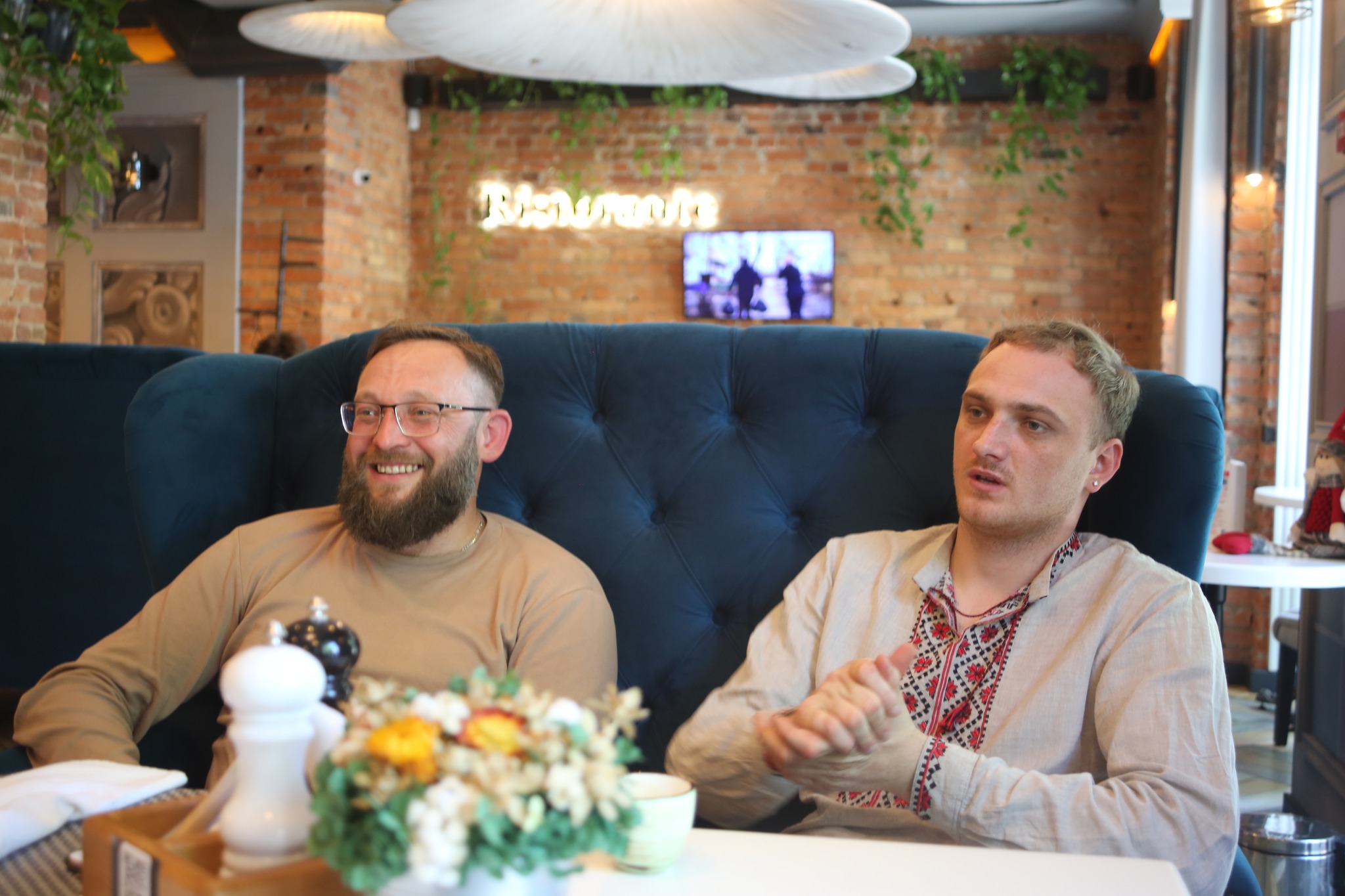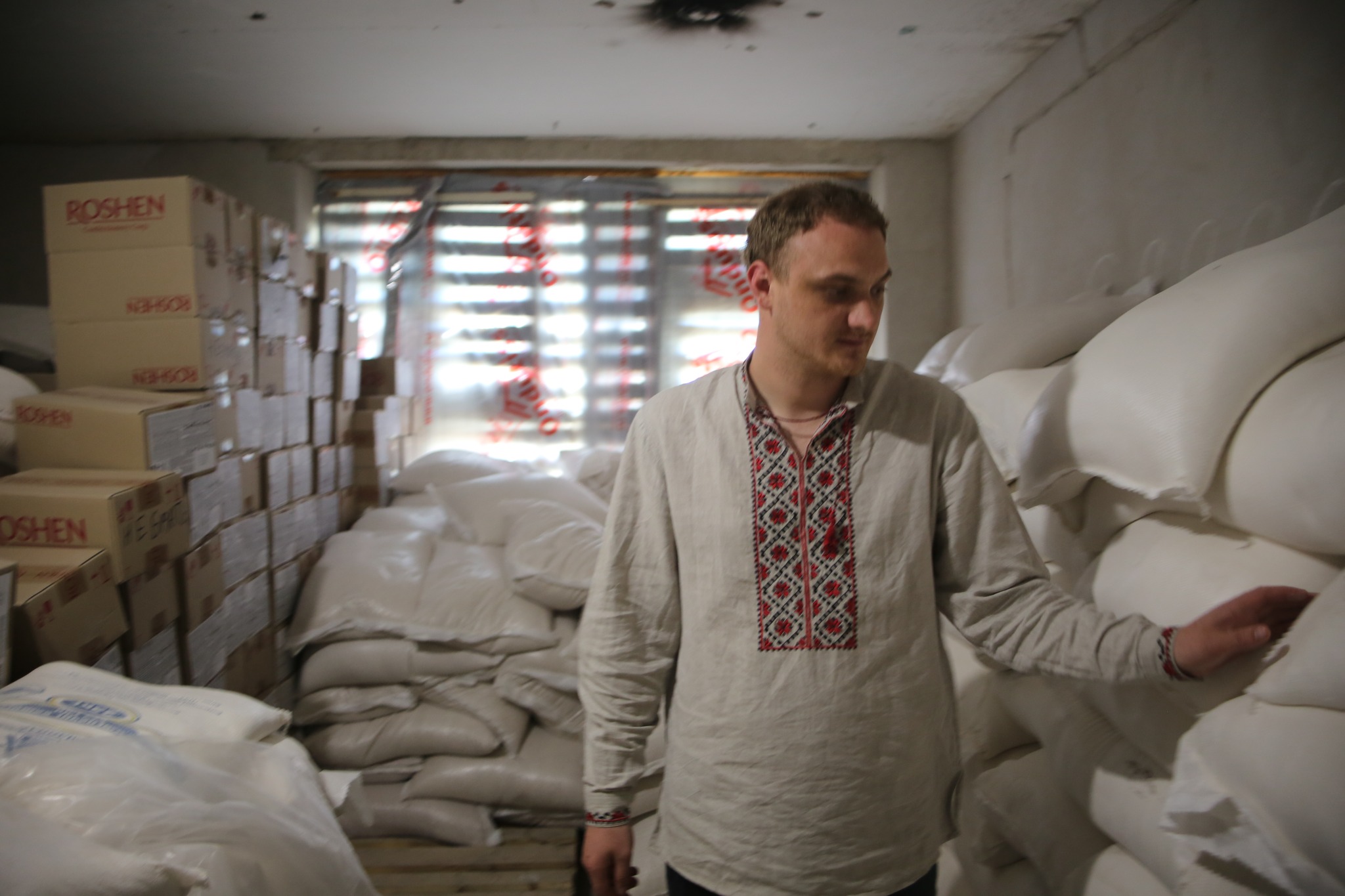In early March 2022, Russian troops passed the northern city of Chernihiv, approaching Ukraine's capital, where heavy fighting took place. Russians did not enter Chernihiv itself yet almost encircled the city.
City dwellers who did not manage to evacuate immediately had only one way out using the city's pedestrian bridge across the river Desna. Some 150,000 residents – almost half of Chernihiv's population – were evacuated this way.
Some could not leave for various reasons – the elderly, those tending animals, or those afraid to take the dangerous route. And those too who decided to help the encircled city.
During the first days of March, Chernihiv's city center was under constant heavy bombardment. Surrounded by Russian forces, 150 people gathered in a fancy pizzeria called La Pizza Espresso to bake pizzas and make sandwiches for the military and civilians that remained in the city. Volunteers also used an unfinished 2000-square-meter kindergarten behind the pizzeria.
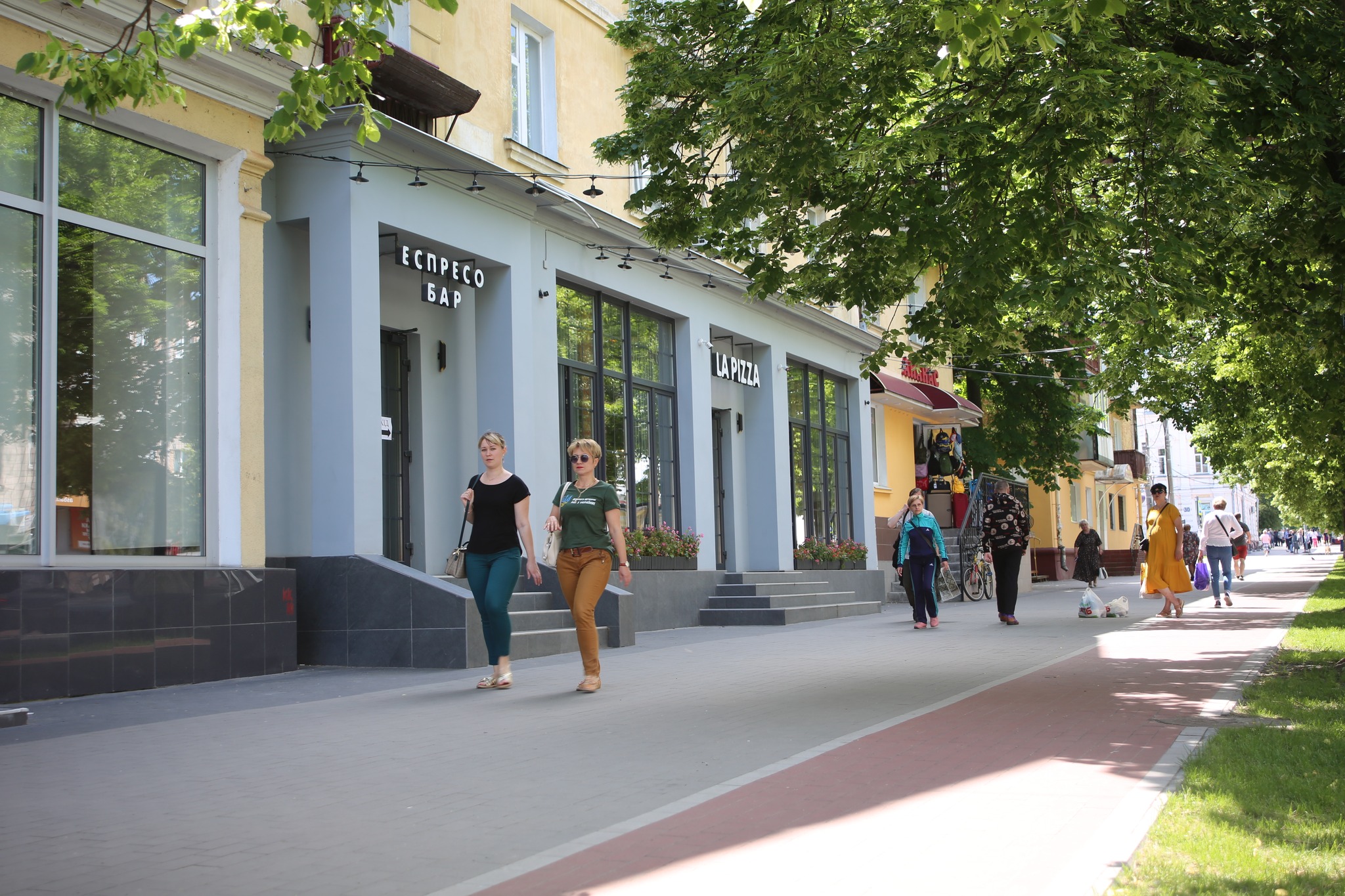
The familiar sounds of cooking were accompanied by unexpected explosions. In an attempt to take the city, the Russian forces were subjecting it to constant shelling. Volunteers used 160 tons of sugar bags to cover the windows, ensuring that nothing in the restaurant was blown away during the Russian bombardment.
On 12 March 2022, everything in the building was turned upside down when the central Hotel Ukraina, just one hundred meters from the café, was hit by a Russian missile. Having stopped for a couple of minutes to clear everything up, volunteers quickly got back to work. Thousands were dependent on the food they were cooking.
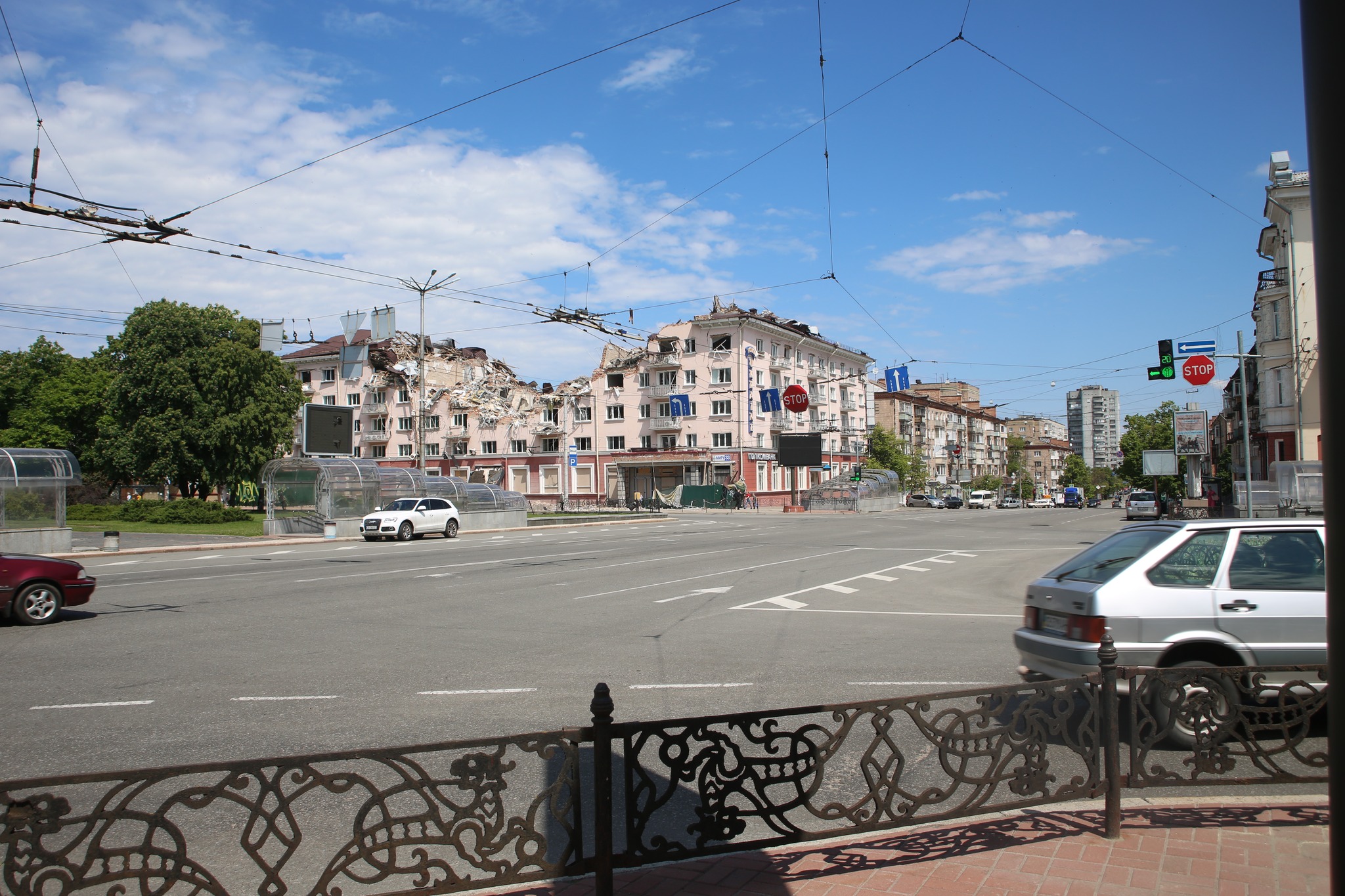
“Perhaps we were the only Ukrainian oblast which fed its military with salmon sandwiches and shrimp,” the pizzeria’s owner Oleh tells us two months after the de-occupation of Chernihiv Oblast when we met him in the pizzeria.
"We cannot fight, but the food is always a must." How a restaurant fed daily 22,000 people
Oleh comes from a village in the central Ukrainian Kirovohrad Oblast. He moved to the north to find a job following his aspirations, adding that he was "never afraid of work."
“Having a restaurant is my dream from childhood. From early age, I watched TV cookery shows and dreamed of opening my own chain of restaurants. And step by step, I moved toward this goal. So now I have three restaurants. The third one, however, is not open yet.”
Oleh says that all the revenue earned during nine years of work were spent on volunteer help, so now there is no money left to open the third restaurant, which is already built, and pay new staff to work there.
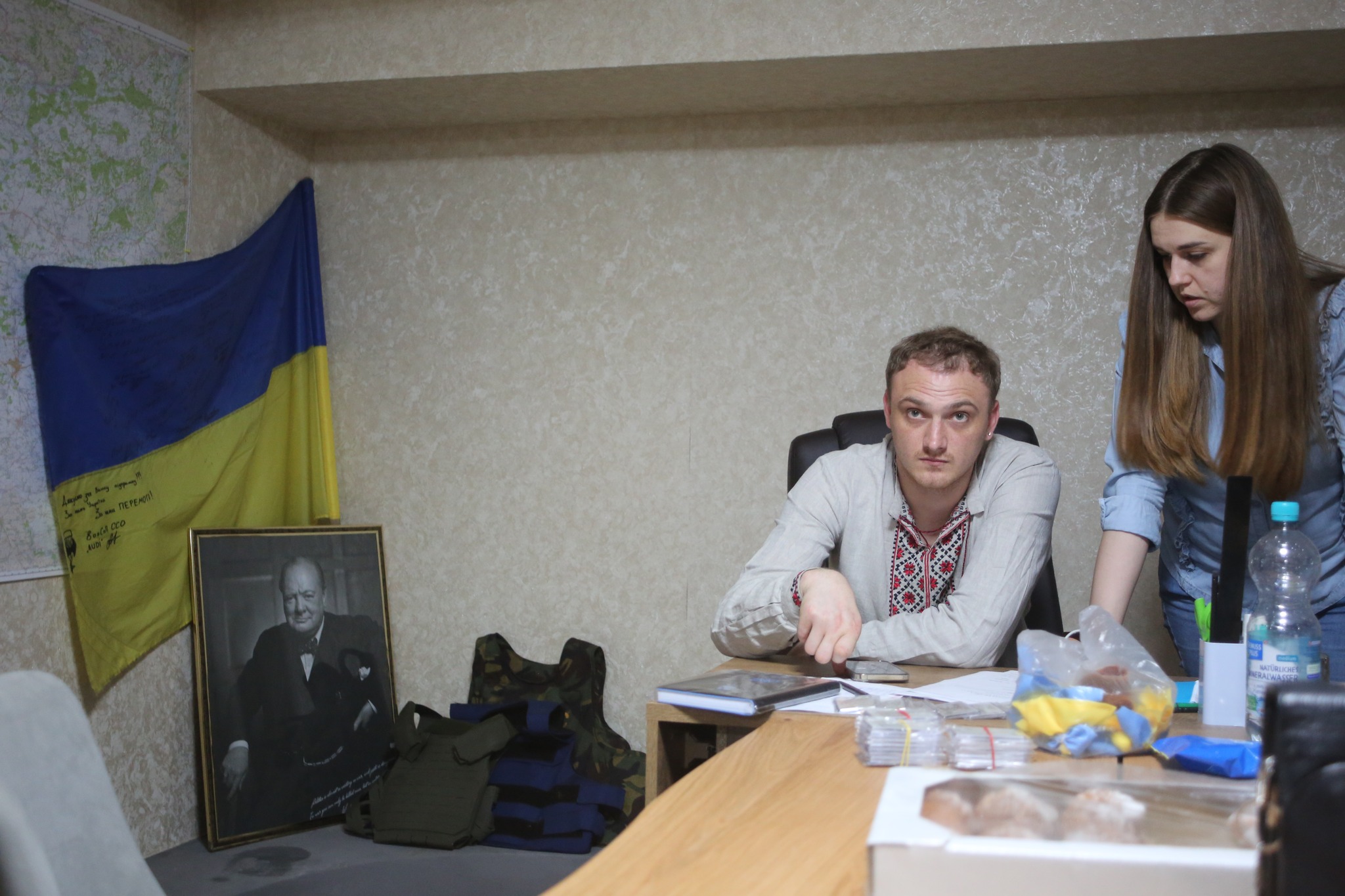
“My business partner and I decided for ourselves that we would not leave the city,” Oleh tells us about his decision when the full-scale war started. “And since we cannot fight but can help in the rear, we decided to do it. Food is always necessary, especially hot meals, so we cooked sandwiches and pizzas and delivered them everywhere in the city.”
They began to work as volunteers on the first day of the full-scale attack, on 24 February, first providing food for the Ukrainian army and later to city residents.
Oleh's restaurant fed 22,000 people daily throughout the city with ready-to-eat hot meals.
The pizzeria has been delivering free food to the army, emergency services, hospitals, and ordinary people, and some people came to the restaurant themselves to take the meals. Later the volunteers introduced a call center and assigned a person responsible for each part of the town. The volume grew daily because more cooks and volunteers joined, with 300 people working in the pizzeria.
During the city's siege, volunteers made tens of thousands of pizzas for city residents and the military, 5 tons of cheesecake
for the military, and delivered many tons of corn, oil, butter, and 160 tons of sugar in food packages.
And after the Chernihiv Oblast's de-occupation, they provided a million more food packages to people who had suffered under Russian occupation.
"Once, 8 tons of mackerel were brought. Chuh-chuh-chuh, we were marinating it in buckets. And the [drivers] took it away. We had everything you could want here," Oleh says.
Many organizations heard about the pizzeria and helped. In particular, Oleh's restaurant cooperated with World Central Kitchen (WCK). But still, donated food required much work before it could be delivered.
“[Once] we were given 200 tons of flour. That's cool. But now it needs to be packaged in 5-kilogram bags and delivered to people. A 5-kilogram package costs 12 hryvnias [0,32 cents]. For 200 tons, this is a considerable sum. That’s only packages. And also 100 tons of pasta. And people need all this, because the situation is difficult. That's why it turns out that at midnight you already come home and fall off your feet, but you can't fall asleep because the day of thinking in your head is not over yet,” Oleh says.
La Pizza Espresso's chef Iryna badly burned her hands because of the large production volume, and now her wounds are healing little by little. Oleh calls her a "woman of steel."
Along with volunteering, the team installed three expensive power generators ($30,000 apiece), so there would be no power outages. Generators were brought to the restaurant under Russian shelling. One of the generators had been donated by a young entrepreneur Yura Stakhiv, who "deserves lots of medals," Oleh says.
Also, during the hostilities, they made their well for water due to water system problems during the siege. A special vehicle drove into Chernihiv specifically for this purpose, but the bridges were blown up the same day, and it could not leave the city.
“No one gave up and was not going to give up. Everyone worked non-stop. They [Russians] bombed here in the early days, and at that time, the ladies [in the kitchen] made 2,000 cabbage rolls for the military. They [Russians] blew up the bridge, well, they did, and we understood that we wouldn't be able to leave the city, but it didn't particularly affect us... At first, I didn't feel any emotions at all. As late as 5 April, I broke down when a soldier's funeral took place, and the mother of the deceased arrived,” Oleh tells us.
Museum of smells: how to be ready for anything, including a new siege
Oleh leads us through the numerous rooms of the unfinished kindergarten where his team of volunteers stores the food, which they continue to deliver – now to the de-occupied villages.
One room is filled with bags of hazelnuts and peanuts. Another has vegetables, and yet one more room has just sugar. One can quickly recognize what is inside the white bags while walking there – all products are stored in huge quantities and can be easily identified by their smell.
One could open a museum of food smells here.
“It just seems that there is a lot,” Oleh says. “It will quickly go away because there is a huge number of people [to whom the products need to be delivered].”
Oleh's team buys some of these products with their funds, and donors also contribute. They make a grocery set of about 10 kilograms from these products, with always differing contents, which are then delivered. The volunteer team also prepares supplies in case there is another siege.
The packaging of grocery sets does not stop for a single day because "there are people who have lost everything, lost all their funds, and no longer have a job,"
Oleh explains.
The volunteers have already visited more than 190 villages that were under occupation and provided aid for people there.
“How will these people live? Some say let the authorities deal with it. But the authorities also have much work to do. They need to start the thermal power plant, repair power lines, and repair gas and water pipes. They also have enough work. No one rests. Everyone works at 100%,” Oleh says.
Oleh comments that the local government also takes good care of the city. The streets have already been cleaned, so the traces of shelling are not always visible in the city center. Transport has restarted too. But after the occupation, every task is more complicated, Oleh concludes.
Fewer volunteers, more work: challenges after de-occupation
After the de-occupation, the volunteers delivered food, helped people repair homes destroyed by the Russian bombing, and prepare for the heating season.
“Everyone understands there will be no gas this winter and no coal. And so that there is no ‘live demining’ when older people and children from low-income families go to the forests themselves to collect firewood, we collect firewood, cut it into two-meter pieces and prepare lists of villagers to receive deliveries closer to autumn,” Oleh says.
Their project aimed at heating people’s homes is called “Spark of Good.”
In the beginning, 200 people from all over Ukraine volunteered for a month to help the team rebuild the destroyed homes of Chernihiv residents.
"There were different people there: teachers, musicians, lawyers, judges. They came from all over Ukraine to Chernihiv to help us help people," Oleh tells us.
Now, with time passing, only 20 people continue volunteering to rebuild houses, and there is a great need for workers.
"There were 200 volunteer builders at the beginning, but they are all exhausted. These are people to whom we do not pay salaries to. Everyone also has their own families and jobs, and they cannot help us all the time. These 200 worked here for about a month, and they have great respect for that alone. Soon it will be autumn, cold and damp. People will get sick if they are not helped now,” Oleh sums up.
Volunteers also carry out smaller projects. Before Children's Day, there was an event where people could buy a pizza, write their wishes on it, and then take the pizza to children who needed it.
Another small project the team initiated was delivering nets similar to beekeepers to the soldiers in the forest because mosquitoes and midges are very numerous due to the record flooding of the Desna this year, and nothing protects soldiers from mosquitoes except perhaps such nets.
As we drove back from Chernihiv, we saw soldiers in such nets at one checkpoint.
"It is difficult to work now,” Oleh admits. “You talk with donors days without end, travel, show them, count on something, then you get something, and something you don't get. You sit on roofs, drag slate, boards, and tarpaulin. Then you arrive, carrying sacks of flour and sugar. We are already so tired these days. For example, firewood. It is not cheap and needs to be purchased in large batches for people. And the car needs to be fixed to bring them in. Today I received a list worth almost $1,000 of what needed to be fixed in that car. And so it is every time.”
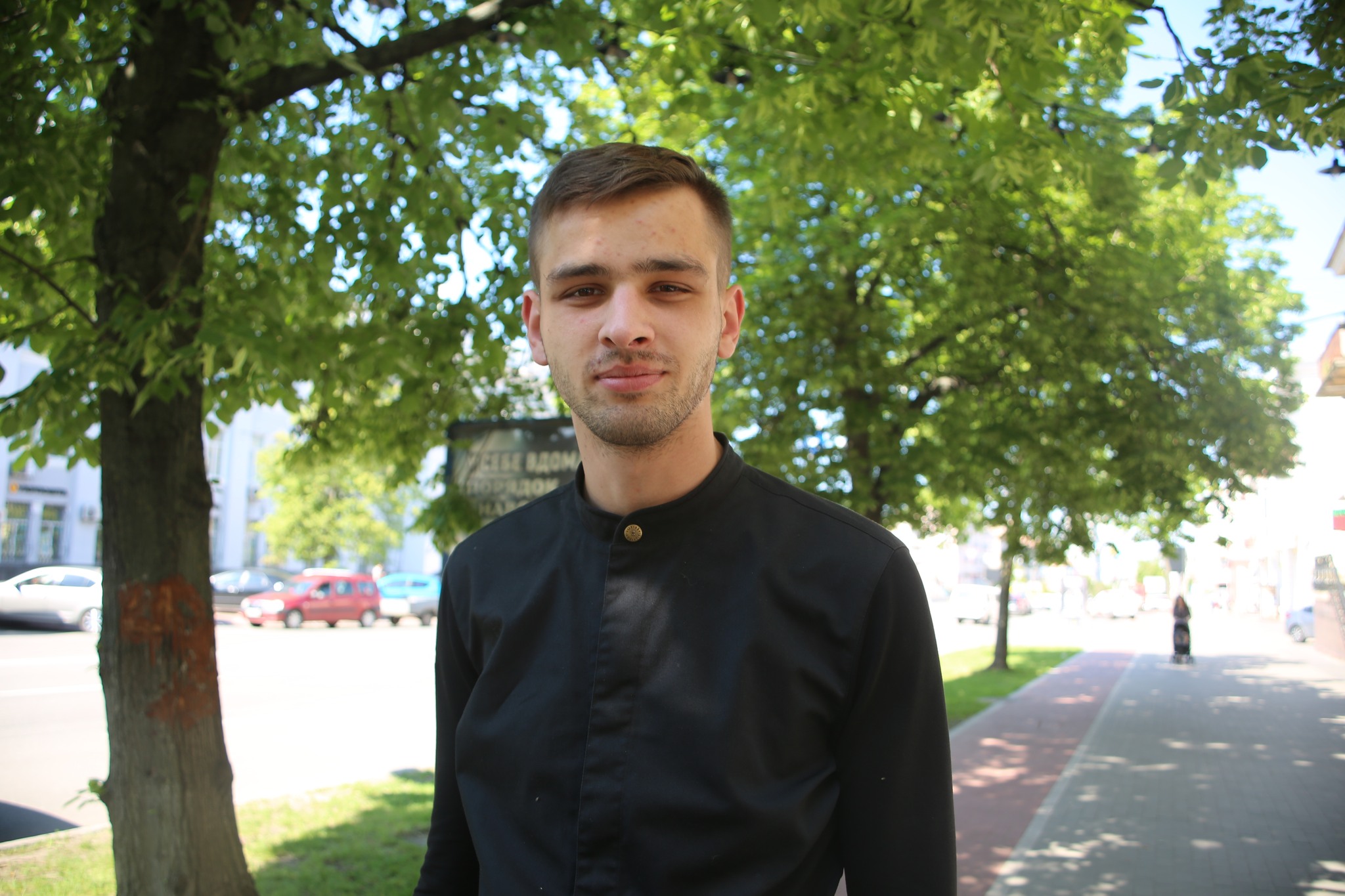
Near the restaurant, we also met Ihor, 25, who has been a volunteer here from the first day and now also works as a waiter. Since 24 February, he has spent 50 nights in the pizzeria. Now he is a bit less overloaded, but he says he feels
“disappointed that those who are now returning to Chernihiv do nothing and do not understand that it is necessary to help those who sat in basements and lost their homes and now need help the most. Those who left the city [during the Russian occupation of Chernihiv Oblast in March] and then returned, do not understand this at all,” he says.
Despite his disappointment, Ihor remains optimistic and says the volunteers will continue working as long as necessary.
"Church help set a precedent"
While talking with Oleh, father Roman, a priest in the Ukrainian Orthodox Church, came to the pizzeria to take food packages he would deliver to one of the remote villages near the border with Russia.
He told us that 300 people lived in a village before the Russian invasion, and now there are only 50. Yet only 13 people stayed there during the Russian occupation, so some have already returned.
These are mainly elderly, Roman says, adding that "in these remote villages, few young people lived even before the war."
“These villages are very remote, in the middle of forests, where people do not produce anything but live off what they collect in the forest and sell. And now even that is gone, because everything is mined,” Roman explains. "Sometimes what you bring to people is not so important as the fact that you will come to them. People are waiting for your arrival; communication is no less important. As soon as you arrive in the village, people immediately flock to you like chickens to a hen."
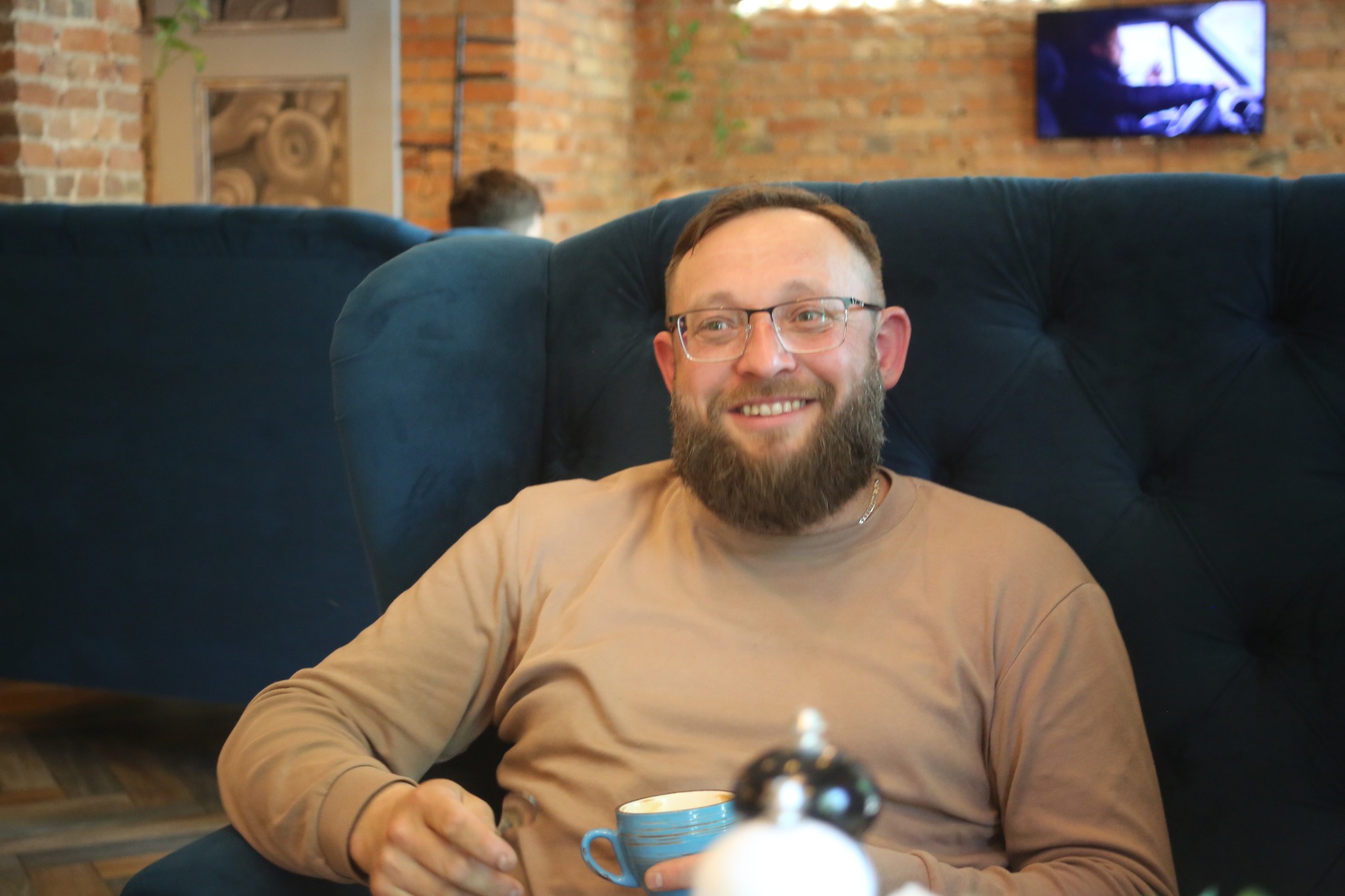
"I knew there would be an invasion,” Roman says. “The information was there, and it was the mistake of many that they did not fully understand it and hoped that it would not happen... The first four days were a bit chaotic; it was not completely clear how to act, but then we chose our clear path.”
While all the churches in Chernihiv were closed, Catherine's Church, where Roman serves, was open daily. Roman says people started calling the church.
"Some needed medicine, some needed food, some communication. I wanted to help everyone," Roman says.
At first, he helped with what he had at home, and then a volunteer group that cooperated gathered.
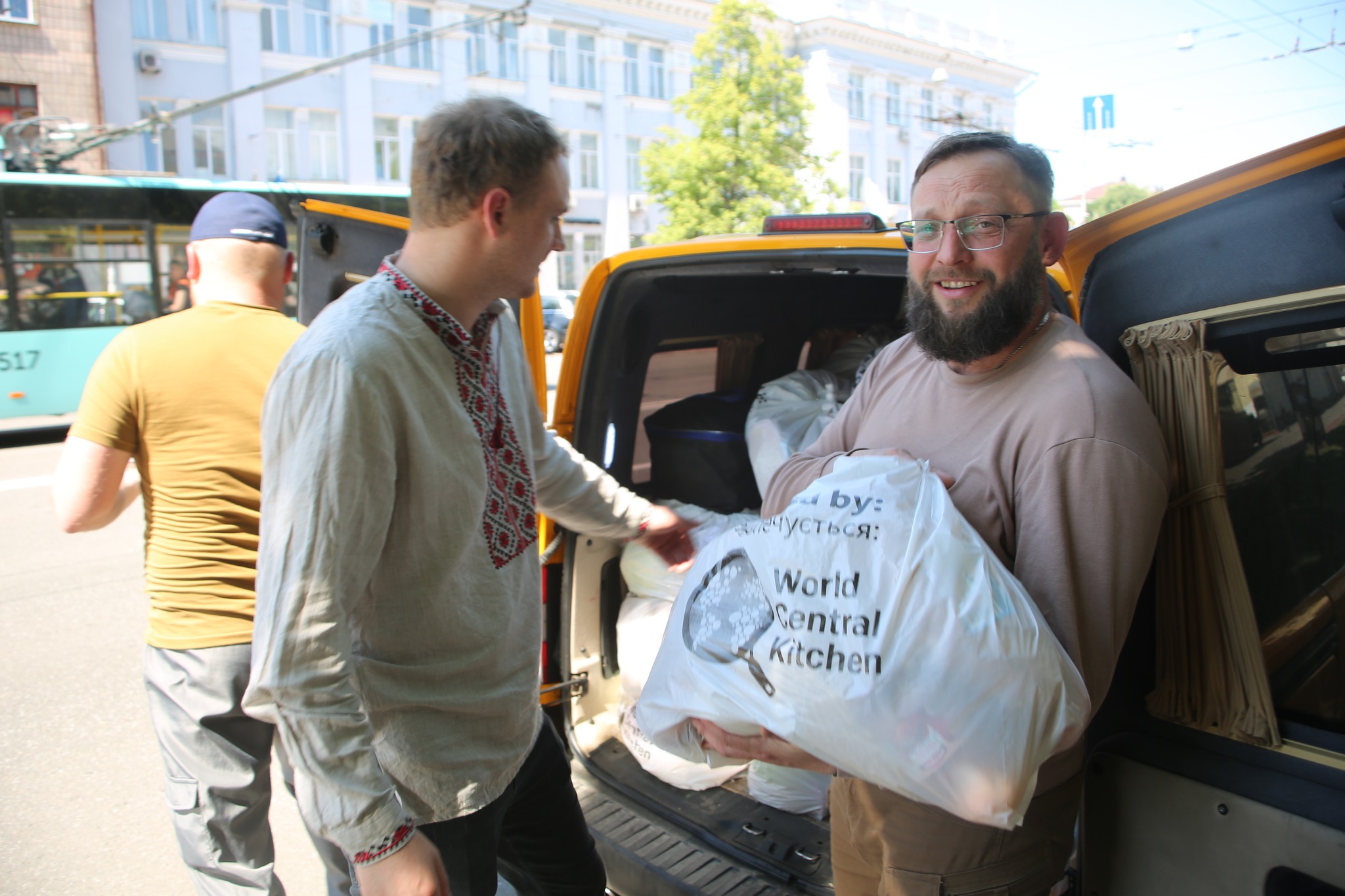
In 2022, Russian shelling also damaged St. Catherine's Church but did not destroy it:
“Fragments cut into the walls, the windows were broken, but it was not seriously damaged,” Roman tells us. “There, the walls are about three meters thick. It was originally built as a defense structure, a Cossack temple, in honor of the victory of the Cossacks on Azov. It stood firm for 300 years and is still standing."
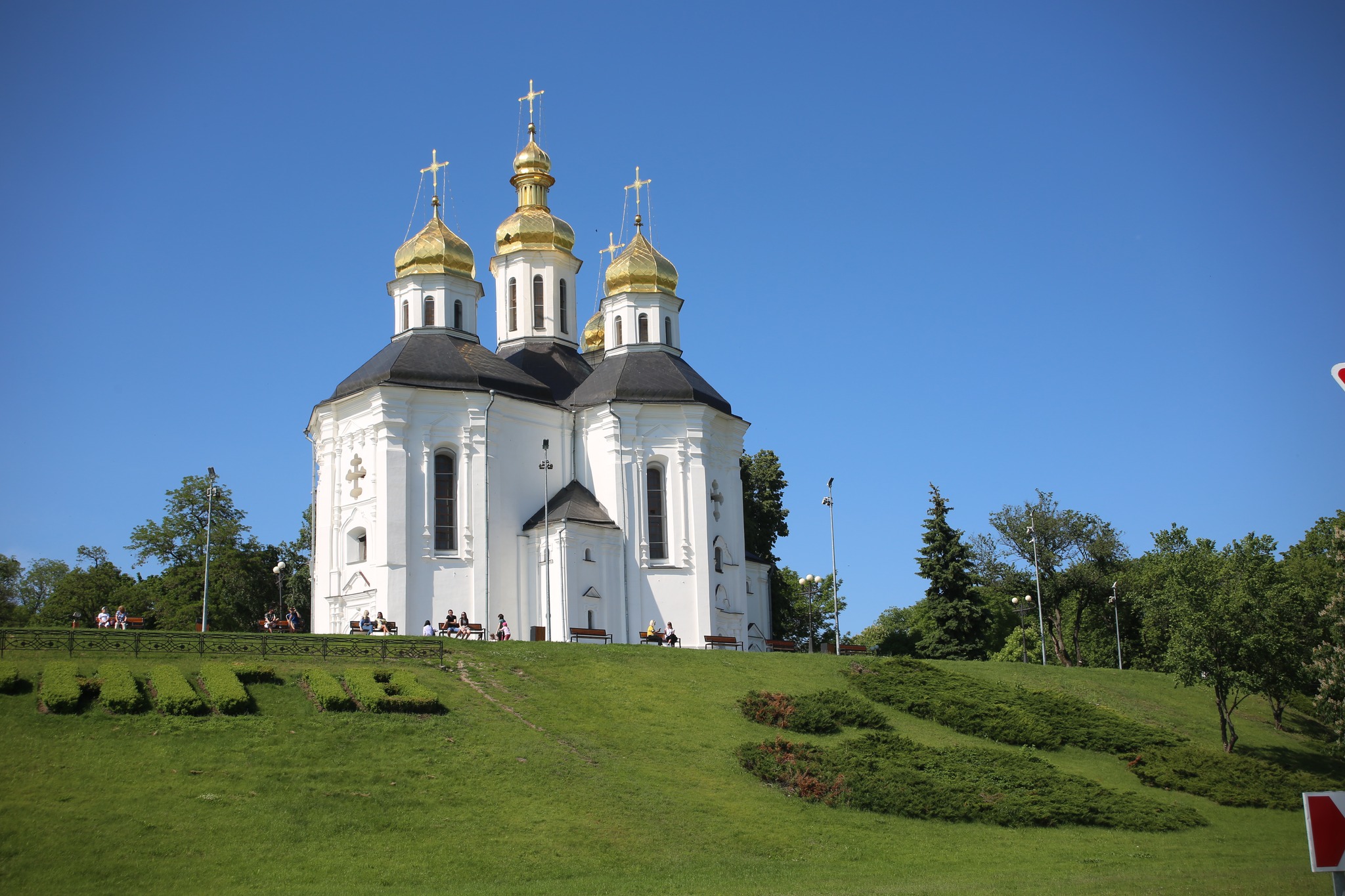
"The church helps us a lot with building materials,” Oleh tells us. “This is a precedent. People need to see how the church helps people, helps residents who have suffered."
Building materials are needed in enormous quantities, Roman says.
“Sometimes people think that some humanitarian aid had already been sent to Chernihiv Oblast; they already have enough of it. But this is almost nothing. Yes, there is help, but it is still very little when you compare it with the scale of destruction. The war is no longer here, but the consequences, to restore everything, require colossal resources."
Since 2015 (mainly due to decentralization reform), the city's infrastructure has experienced notable positive changes, including new bicycle routes, parks, and pedestrian streets. Thankfully, this year's Russian siege did not destroy all of this. But there have been yet more subtle changes since the times of the 2014 Revolution of Dignity, Roman notices.
He says that since 2014 there has been a lot of patriotic youth. Many Chernihiv residents are now at the front, Roman says, adding that Catherine's Church has already buried many soldiers.
“But the nost rewarding thing is that new people are stepping up [to defend Ukraine] in their stead. [National] consciousness is now awakening despite decades of Soviet repression, famine and extermination of Ukrainians.”
Related
- "The route to life." How volunteers secretly rescued 75,000 from a city encircled by Russian troops
- Whoever could, fled the Russians. We went back to Irpin to save the rest
- Created in three days, Ukraine's territorial defense ruined Russian plans to capture Kyiv
- "They were shot in the back of the head." Eyewitness account of Russia's murders of Bucha residents
- Ukraine's secret to resisting Russia: resilience
- Bucha: a turning point–not only in Putin's war in Ukraine, but in relations between Moscow and the world
- Lviv Garrison Church chaplains help soldiers find God amid war. And a pair of good boots
- Ukrainian theology professor turned sniper tells how to hunt for Russian invaders
- "Dearest daughter, it's total Hell. Death is everywhere" – Ukrainian father on the frontline
- Russian occupiers launch war on Ukrainian history, burning books and destroying archives
- The Russian invasion of Ukraine is an assault on the very concept of freedom
- From retiree to millionaire: 7 stories of heroism during the war in…

